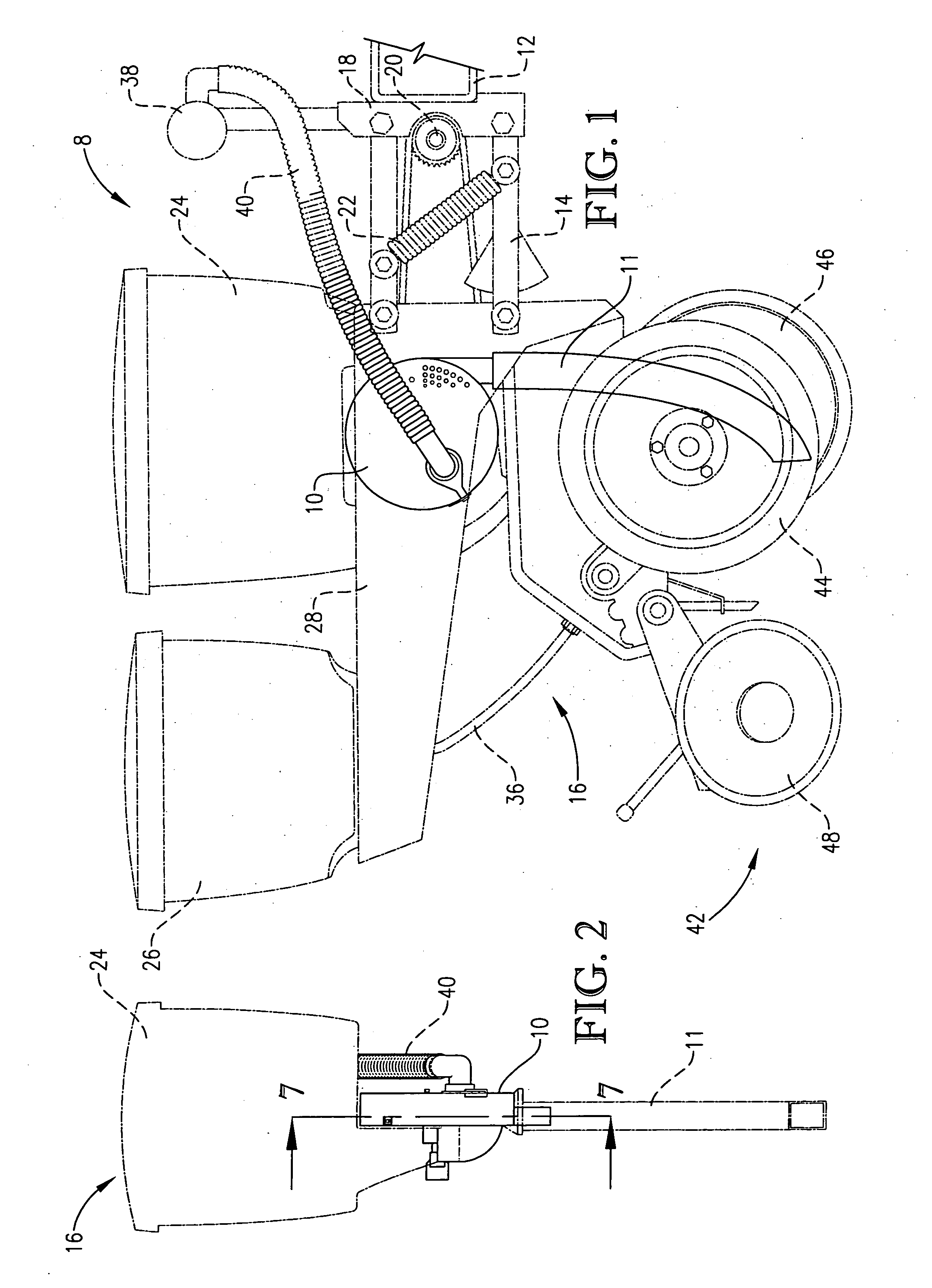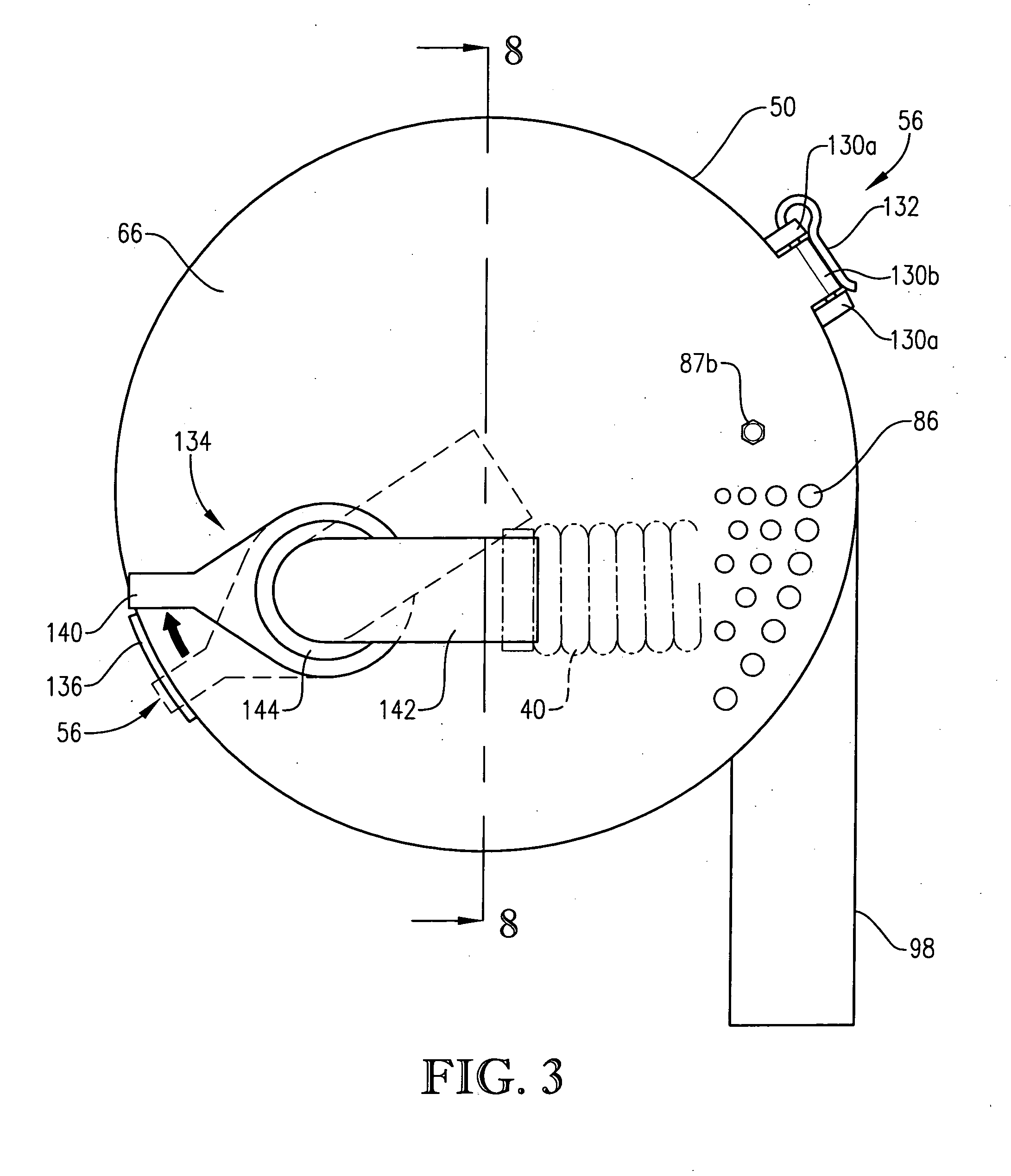Seed meter
- Summary
- Abstract
- Description
- Claims
- Application Information
AI Technical Summary
Benefits of technology
Problems solved by technology
Method used
Image
Examples
Embodiment Construction
[0031] Referring initially to FIGS. 1 and 2, the present invention concerns a vacuum planter 8 equipped with an improved vacuum seed meter 10 for continuously planting single agricultural seeds (e.g., cotton, soybeans, and corn) at a predetermined rate. The improved seed meter 10 is attached to a rear frame 14 of a mobile support structure 12 of the planter 8. The frame 14 is provided for supporting and manipulating a plurality of planting assemblies 16 and includes a mount 18 for connecting the frame 14 to the mobile support structure 12. The frame 14 includes a linear actuator 22 for vertically shifting the frame 14 relative the mobile carrier 12 between a lower engaged position and a raised transportation position. A drive mechanism 20 can also be coupled to the frame 14. The drive mechanism 20 can be configured to transfer the rotation of the wheels (not shown) of the planter 8 to the seed meter 10. Alternatively, the drive mechanism 20 can be electrically or hydraulically drive...
PUM
 Login to View More
Login to View More Abstract
Description
Claims
Application Information
 Login to View More
Login to View More - R&D
- Intellectual Property
- Life Sciences
- Materials
- Tech Scout
- Unparalleled Data Quality
- Higher Quality Content
- 60% Fewer Hallucinations
Browse by: Latest US Patents, China's latest patents, Technical Efficacy Thesaurus, Application Domain, Technology Topic, Popular Technical Reports.
© 2025 PatSnap. All rights reserved.Legal|Privacy policy|Modern Slavery Act Transparency Statement|Sitemap|About US| Contact US: help@patsnap.com



